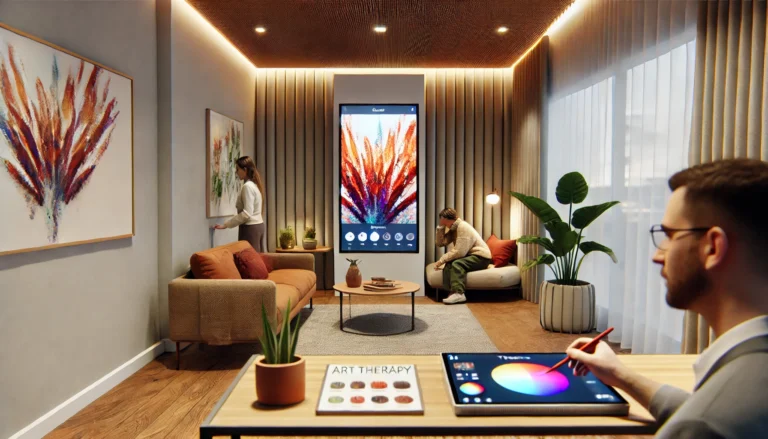The fascinating world of User Experience (UX) design opens up even more intriguing corridors when the users in question are children. These nascent minds, brimming with curiosity, approach the digital realm differently than adults. Thus, designing for them requires an approach that combines visual allure, educational value, playful interaction, and robust security. Incorporating the prowess of Artificial Intelligence (AI) in harnessing data analytics elevates this design process, enabling a more tailored and safe digital environment for the young ones. Let’s delve deeper.
1. Deciphering the Young User’s Psyche:
It’s not just about making something ‘fun’; it’s about aligning the design with the cognitive and emotional growth stages of a child.
- Attention Span: Young minds are curious but easily distracted. Faster load times and immediate engagement become pivotal. Incorporating elements like animated loaders or engaging splash screens can keep them hooked while the content loads.
- Cognitive Development: A child’s interaction with technology evolves rapidly with age. For instance, a 4-year-old might rely heavily on icons and voice commands, while a 9-year-old might be comfortable with text and more complex navigation. Therefore, segmenting the user base by age and offering age-appropriate interfaces is invaluable.
- Safety Above All: The digital world is vast, and not all its corners are safe for kids. Parental controls, secure data policies, and age-appropriate content filters are indispensable components of any children-centric platform.
2. The Pillars of Kid-Friendly Design:
The foundation of an effective kid’s app or website is built upon these principles:
- Simplicity: While adults appreciate multiple features, kids require a straight-to-the-point interface. Hierarchical designs, with primary actions highlighted and secondary actions subtly placed, cater to their exploration style.
- Interactivity: Passive content consumption isn’t enough. Children love to ‘do’. Thus, sprinkle interactions everywhere – be it clickable animations, interactive tutorials, or gamified tasks.
- Vivid Colors and Illustrations: The color palette for children is different. They gravitate towards brighter, more vivid shades. Moreover, abstract concepts might be challenging for them, making relatable illustrations crucial.
- Auditory Feedback: A multi-sensory experience can make apps more immersive. Fun sound effects that provide feedback or playful background tunes can amplify their engagement levels.
3. The AI-enhanced Kids’ UX Design:
Artificial Intelligence, when melded with UX design for kids, acts as a potent tool in fine-tuning and ensuring safety. Here’s how:
- Personalization at Scale: Children love feeling special. Through data analytics, understanding their interaction patterns, content preferences, and more can lead to creating a ‘personal digital buddy’. AI can offer suggestions, modify themes, or even adjust difficulty levels in real-time based on individual user behavior.
- Safety Monitoring with AI: A continuous monitoring system powered by AI can detect and immediately respond to potential threats. Whether it’s filtering inappropriate content, flagging unsuitable interactions, or even notifying guardians of suspicious activities, AI can be the ever-watchful sentinel.
- Progress Tracking and Adaptive Learning: Especially in ed-tech applications, AI can be a game-changer. Monitoring a child’s learning curve, identifying strengths and areas of improvement, and then adapting the content dynamically can provide a tailor-made learning path. Gamified tests, quizzes, or challenges can be generated on-the-fly based on their learning history.
Workshop Framework: Kid-Centric UX Testing with IBM Design Thinking
IBM’s Design Thinking has become a popular methodology for addressing complex problems and creating human-centered solutions. Applying this to a workshop for children can provide a structured yet flexible approach to gain user insights. Here’s an enhanced framework incorporating IBM Design Thinking principles:
1. Set the Stage:
- Understand the Intent: Clearly articulate the workshop’s goals. What do you want to achieve? What aspects of the UX do you want to test?
- Gather Participants: Ideally, children who are part of the target audience. Remember, diversity in age, gender, and experiences can provide a richer pool of feedback.
- Prepare the Environment: Ensure a comfortable, playful setting. Kids should feel relaxed and free to express themselves.
2. Empathy Maps and Personas:
- Introduce Empathy Maps: Use this tool to document what the children are saying, doing, thinking, and feeling as they interact with the app or website.
- Create User Personas: Based on your observations, group common behaviors and feedback to create user personas. This helps in understanding different user categories and tailoring the experience to various needs.
3. Group Activities:
- Exploration Time: Instead of a direct interaction, make it story-based. Introduce the app/website as a ‘magic land’ they have to explore. Observe their spontaneous interactions.
- Task-Based Testing: Incorporate narratives or storylines for each task, making it feel more like a game. Tasks should cover core functionalities of the app/website.
- Playbacks: This is a core IBM Design Thinking activity. After tasks, have a quick playback session where children describe or act out their experiences.
4. Feedback and Ideation:
- Visual Feedback: As mentioned earlier, use visual aids like emojis or stickers for kids to express feelings. But you can expand this by creating a mood board where kids can place their stickers, drawings, and notes.
- Storytelling Session: Ask the children to weave a story based on their experience. This can give insights into their emotional journey through the app/website.
- Ideation: Introduce a problem-solving segment. Pose a challenge or a problem they might have encountered and let them brainstorm solutions. This encourages proactive thinking.
5. Synthesis and Evaluation:
- Affinity Diagrams: Group feedback and observations on boards. Look for patterns, similarities, and outliers.
- Pain Points & Highlights: Identify the highs and lows of their experiences. What did they enjoy most? Where did they get stuck?
- Prioritization Grid: Use a grid to prioritize feedback based on importance and frequency. This will guide future design decisions.
6. Reflection & Closing:
- Thank You Notes: Let children write or draw a ‘thank you’ or a goodbye note to the app/website. This gives a final touchpoint on their overall feeling.
- Gifts & Tokens: Rewarding their time and efforts with small tokens or gifts can make the experience memorable.
7. Post-Workshop Activities:
- Data Analysis with AI: Process the feedback and observational data using AI tools to derive patterns, insights, and actionable points.
- Iterate: Use the feedback to make iterative changes to the design, always keeping the young user at the center.
Conclusion:
Creating a delightful UX for kids demands an understanding of their unique needs and preferences. With the right design principles and the integration of AI-powered data analytics, it’s possible to craft digital experiences that not only engage young minds but also promote their growth and safety. As technology continues to evolve, so will the opportunities to create better digital platforms for our future generations.










